|
February 2007 Storms and Snowdrops
A wild month so far!
By Sandy Leven
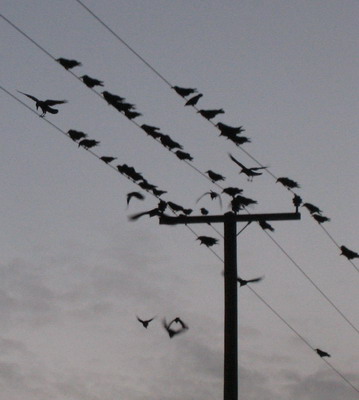 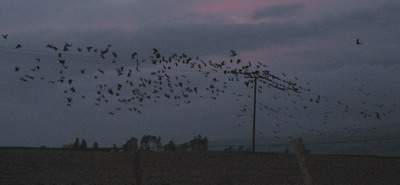
Rooks resting or roosting ?
We have had sunny days with blue skies, snowy days, frosty days and dull wet grey days. Some nights I thought we might get blown away.
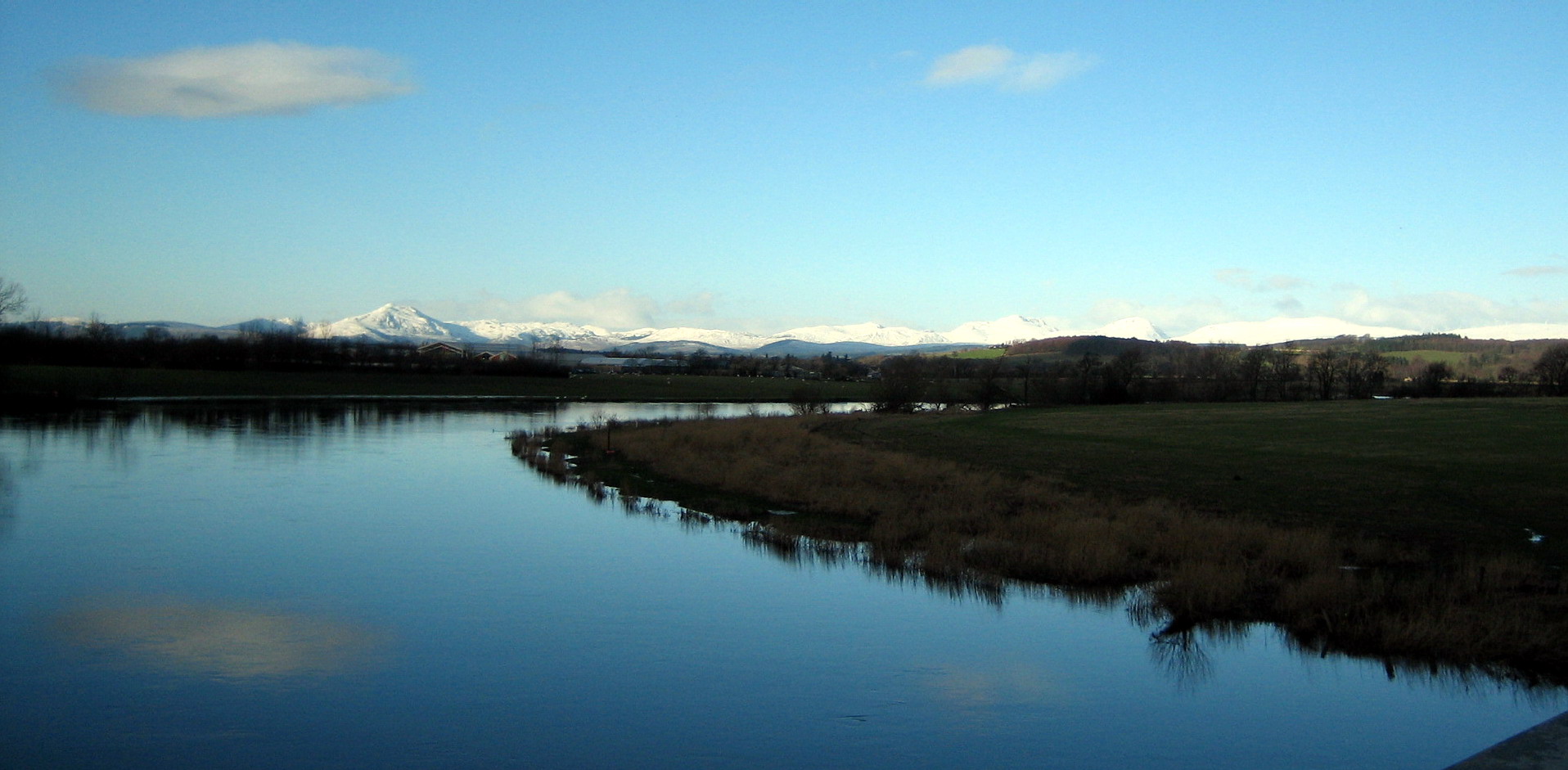
River Forth with Ben Ledi
It was seeing some of Janis Ruksans' pictures of crocuses and corydalis at the Dunblane Early Bulb show which blew me away! For his visit we arranged the best weekend of weather so far this year. Ian Christie arranged a great visit for us to see snowdrops in the wild.
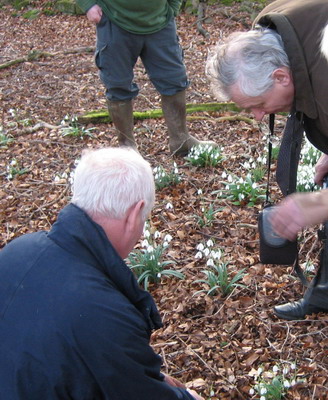
Ian Christie and Janis Ruksans look at snowdrops
It is difficult not to excited by the snowdrops which push up just as the days are getting longer and brighter. In previous times, owners of some of the big estates planted snowdrops and daffodils in their expansive grounds. A century of seeding clumping has left a wonderful legacy and today we can appreciate the results. The leaflet produced by VisitScotland lists about 60 places in Scotland where we can go to see snowdrops. It is impossible to visit all in one season but I have made a start.
Churches and old graveyards are other places where folk have tried to brighten their spring visits by planting a few snowdrops. Again with the passage of time, seedlings have spread over wide areas. I suspect that the sense of rebirth and renewal which the snowdrops announce was an important factor in their choice. They also stand up to the weather.
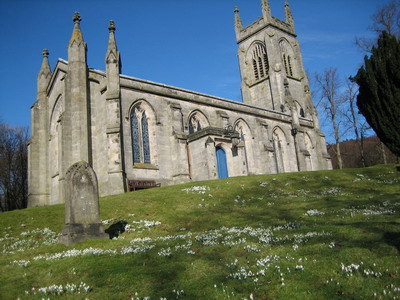 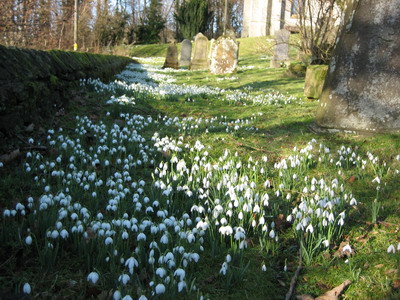
Lecropt church, by Stirling
Near Stirling a motorway has been driven between Lecropt church and Keir House. The excavations 30 years ago must have cut through a big swathe of snowdrops. Those in the cemetery still push up through the short turf but over the wall in the leaf litter of a scrubby wood they are much more prolific. Here there is a mix of single and double Galanthus nivalis.
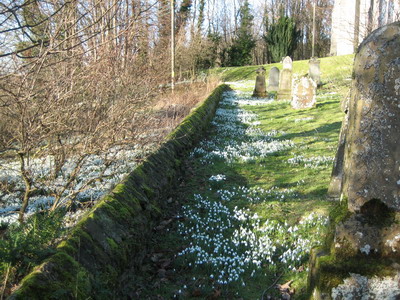
The dyke between kirkyard and scrubby wood
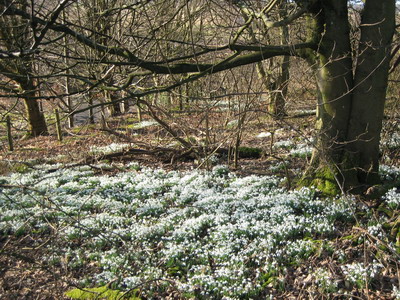 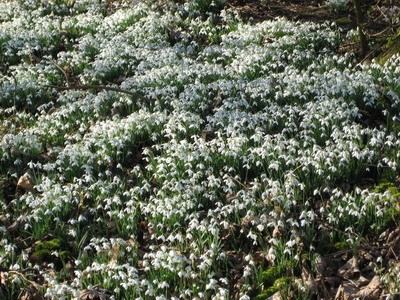
O'er the dyke
Many must have perished under the motorway. This is not a tirade against motorways but a hope that many of the bulbs might have been rescued and transplanted. [Fat chance of that!]. We were told many years ago that in Colorado and Wyoming, when road improvements are planned, the route is scoured for interesting plants which are then lifted, cared for and replanted on the sides of the new road when it is finished. If this is true it is a great idea. Much better to plant things that belong in an area than to just scatter 'wild flower seed' willy-nilly over the road banks. In places where seed is spread it is often protected by straw. The straw looks untidy but provides shade and humidity for the young seedlings.
OPPORTUNISTIC ORCHIDS
While I have little doubt that snowdrops suffered, the re-routing of the old A9 meant that a steep bank had to be cut on the new roadside. This has proved to be an ideal habitat for 2500 Northern Marsh Orchids which flower in June.
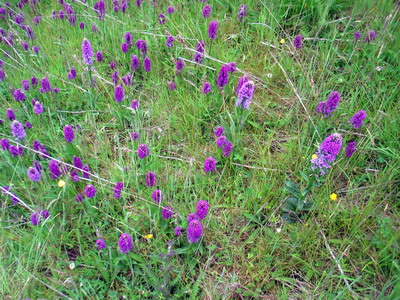 
Roadside bank of orchids
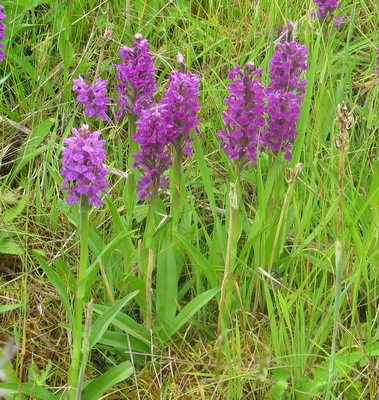
Dactylorhiza purpurella
Scrub was recently cleared from the area by Stirling Council staff and members of the local group of the Scottish Wildlife Trust. Here the Northern Marsh Orchid, Dactylorhiza purpurella grows with D. fuchsii and I suspect some D. maculata [because some of the leaves on the plants are very spotted]. I don't think I saw any D. maculata itself.
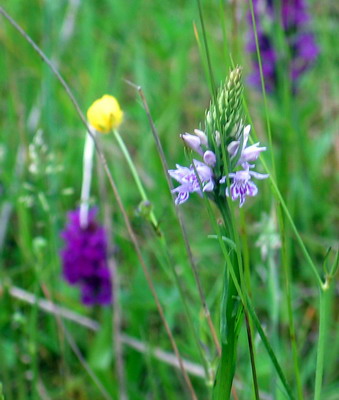
Dactylorhiza fuchsii
The three species hybridise to give some fabulous hybrids. Most of the hybrids seem to be much taller than D. purpurella. Some have magnificent flower spikes, which vary from pale pink to deep magenta with various markings. Some have plain leaves while others are very spotted.
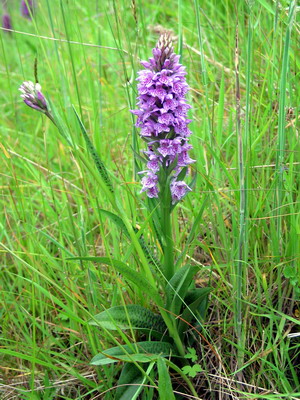
Dactylorhiza purpurella x maculata?
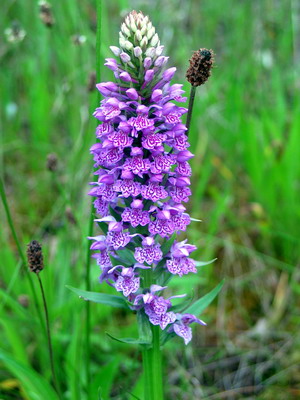 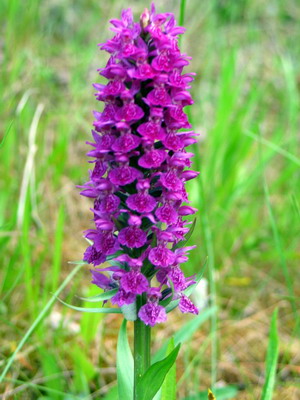
Dactylorhiza hybrids involving purpurella, fuchsii and maculata

Dactylorhiza purpurella on left with hybrids. Note the difference in leaf spotting.
A few have started to clump up, but many are individuals.
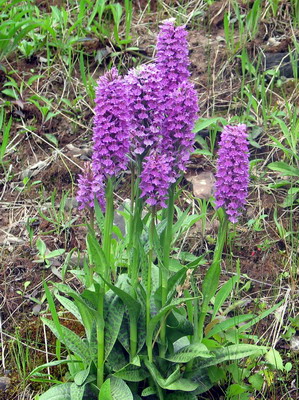
So bypass construction is not all bad. Just the other night the M80 [which joins the M9] was closed because a tipper lorry got its tipper section stuck under a gantry across the road. The motorway was closed for a whole day. All the traffic had to go through Denny and Dunipace, reminding locals of just how impossible it would be to do without our motorways. Towns are quieter and safer, wildlife finds new safe places to live on the motorway banks and walking is more pleasant on the 'old roads'
SNOWDROP HUNTING
In my search for snowdrops I visited Low Valleyfield to see Valleyfield Wood. This is a wooded area along the 'gorge' of the Bluther Burn, which runs into the Forth near Culross. The old mansion house was demolished by East Fife Coal in 1917 but some of the parkland and wood remains. David Douglas worked at Valleyfield house before travelling South to Kew. There is a nice walk beside the burn, which is quite wide really, an eventually you come to the snowdrops.
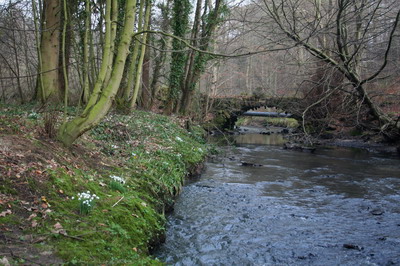 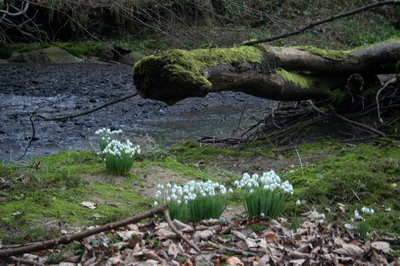
Snowdrops by the Bluther Burn, Low Valleyfield, Fife
The snowdrops at Valleyfield were a mixture of single and double Galanthus nivalis. They were elegant tall plants
 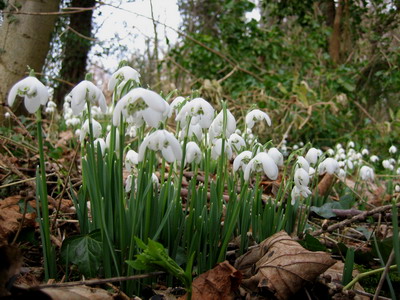
A few miles up the forth Estuary at Culross it seemed that spring had sprung already. A wonderful flowering cherry dominated the garden of one 'typical' Culross house, with its red pan tiles and crow-stepped gables.
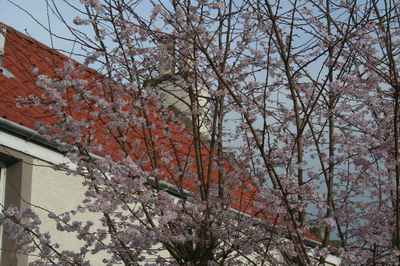
Flowering Cherry in Culross on 4th February
In a tub nearly was a plant of Convolvulus cneorum in flower. The first time I saw this was at an Edinburgh show many years ago when it was shown by Harley Milne. I fell in love with Harley's plant then and still think it is a wonderful wee shrub.
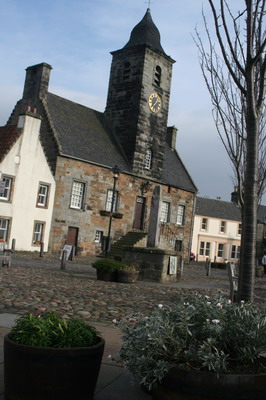 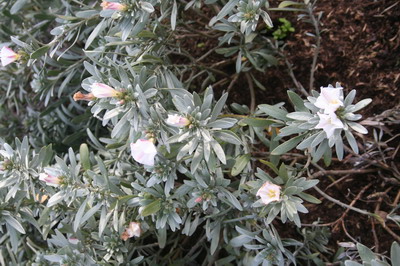
Convolulus cneorum, in front of Culross town hall.
A little further upstream the New Kincardine Bridge is being built just beside Scotland's tallest pylons.
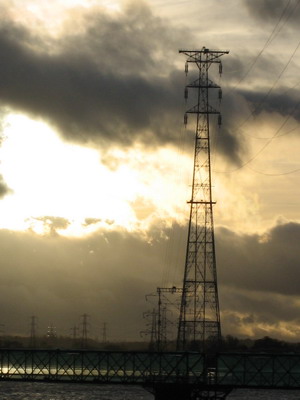
Scotland's tallest pylon!
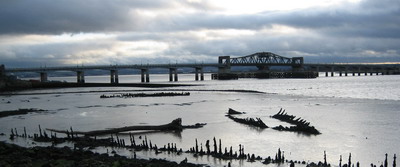
Kincardine Bridge
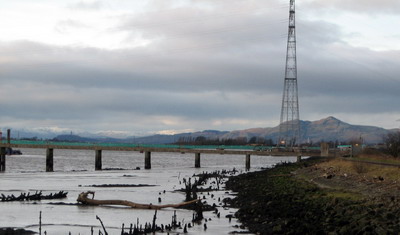
The new Kincardine Bridge, with the ochil hills. The Wallace Monument sits on the left
Gargunnock House, west of Stirling, not only had snowdrops but also rhododendrons in flower.
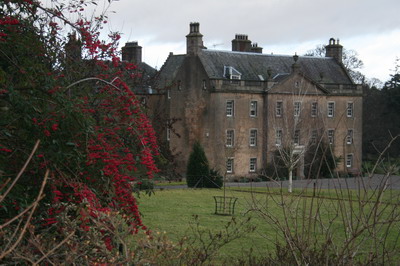
Gargunnock House, with a fabulous cotoneaster.
We made a trip to West Lothian to see more snowdrops at The Binns, home of Tam Dalyell. Here a wooded knoll was covered in a wonderful carpet of Galanthus nivalis. There is short circular walk through the trees, so you can see the snowdrops from above and from below. I complain about pheasants walking over emerging plants on my garden. Tam Dalyell tho' has peacocks and peahens stomping around his place. The potential for damage is minimised by the extent of the grounds and the fact that they seem to prefer grass to snowdrops.
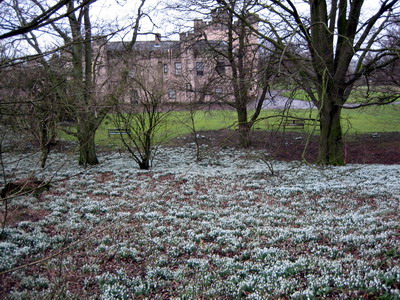 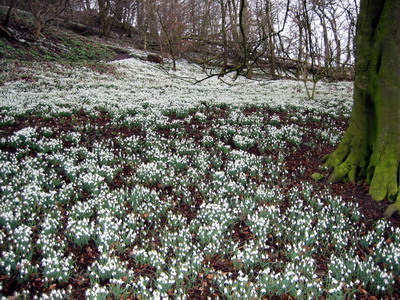
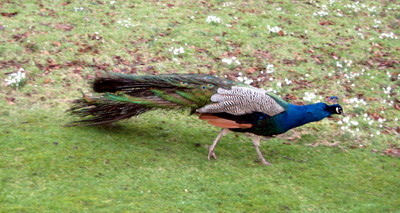
The Binns, snowdrops and one of the peacocks
While we were at The Binns we visited South Queensferry and in the wee garden of the Scottish Episcopal Church we spied a huge clump of Iris unguicularis. Fabulously luxuriant flowers for a cold February afternoon. They must have been planted by a knowledgeable beadle. I hope they are appreciated on Sunday mornings.
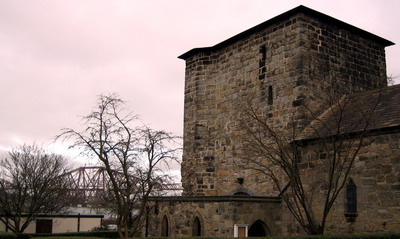 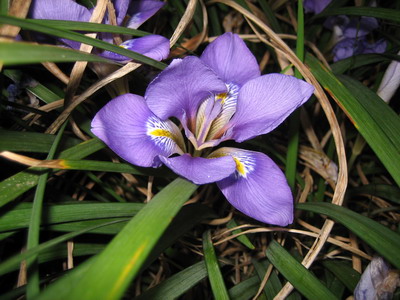
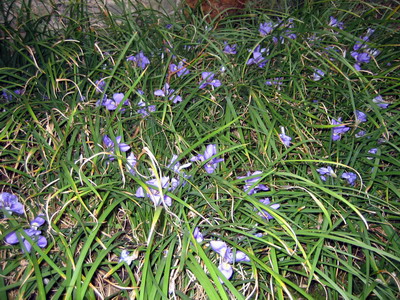
Iris unguicularis flowering in South Queensferry
This is a good time to order Rhododendrons. Glendoik Nursery between Perth and Dundee offer a huge range which you know will grow in Scottish gardens. Their web site is also well illustrated.
Janis Rucksans left catalogues describing the many treasures for sale from his Latvian nursery which is amply illustrated with colour pictures. I usually leave ordering bulbs till autumn but by ordering now, when I am enthusiastic about spring plants would be a good idea. At least I will see what I already have in my alpine house and garden. It will occupy me on the wet days still to come! I will leave with a plagiarised story involving the queen's former tailor and a doctor friend of his:-
Sir Hardy Amies looked in horror at a bulb the size and colour of a cocktail onion: 'You can't expect me to pay £30 for that, Doctor!'.
'Look at it this way, Hardy,' replied Ronald Mackenzie, 'if I go along to Savile Row and buy one of your suits, it will be a wreck in a decade. If you take good care of this bulb, in 10 years' time you'll have many more. Think of it as an investment'.
And so Sir Hardy planted the bulb in his Oxfordshire garden, and joined the select, but growing, band of galanthophiles.
^ back to the top ^
|

